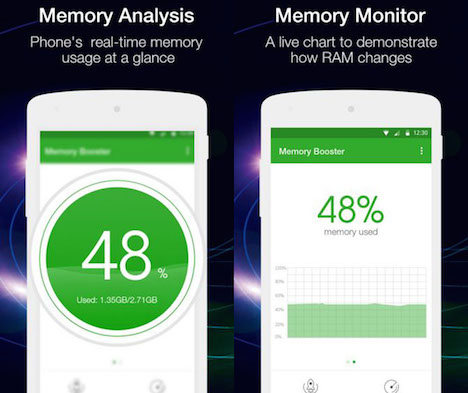

- #Best ram optimizer for android root apk#
- #Best ram optimizer for android root driver#
- #Best ram optimizer for android root free#
CPU (processor governor control)Ī governor is a driver for the regulation of CPU frequency.
#Best ram optimizer for android root apk#
Root Booster Pro APK will find battery draining and performance demanding applications and auto hibernates them. Hibernation is gently and efficient way to save your battery and increase performance. On the other hand, if you hibernate an application it stop it’s services and application does not drain battery and CPU computing power anymore. Application still have services that are running after killing and still drains battery and computing power. Many people think that when they kill an application, it completely stops draining your battery and computing power, but that’s not true. They run in the background and usually perform some kind of task. Hibernation (Android OS optimizer)Įach Android application can have one or multiple services. Here are some explanations for what particularly Root Booster does to your CPU, RAM and Android OS system. These modes are achieved by applying appropriate settings to the main phone components. You can easily apply these settings with preset modes which ensure speed boost, battery boost or stability boost. There are many apps that save battery or increase performance, however, Root Booster uses the most proven settings to achieve the best results. Why is my device not utilizing all of its available RAM?Īre some good starting points, more can be found in the most frequented questions using the ram tag and, for the "monitoring" part, the most frequented questions using the resource-monitoring tag.Root booster Pro APK is for root users who need more performance to run applications smoothly without lags or for those who need to improve a poor battery life.
#Best ram optimizer for android root free#
Are there guidelines on how much free RAM a phone should have?.Note: It's not specifically for RAM usage (though it includes that), but is rather a complete system monitor. The tool also features lists for "top consumers", and more. Historical Consumption even allows you to compare values from a "previous run" (only available in the paid version).

SystemPanel: Processes / Live Plot / Historical Consumption (source: Google Play click images for larger variants) If you're rather after long-time monitoring in the background, you can take a look at these candidates, with SystemPanel being the probably best candidate (use this free version to get a feeling for the app for real good background monitoring, you will need the paid version): The third screenshot answers your "additional question" from the comment: AMO also provides you with a list of running processes, and how much RAM they use. Switch back to the previous as soon as you see it gets too aggressive for you then have the app applying these settings at boot, and you are done. So when giving this a try, start with "Moderate", see how it behaves (at least for several hours, to get a real feeling), then switch up to the next. Both ends of the scale might not be best: too aggressive, and the system might unnecessarily start killing processes you still need. It even comes with several useful presets to experiment with (second screenshot), ordered by "aggressiveness", which makes it easier to test out what might fit you best. Also note that this concept is not to be confused with "Task killers", which are a completely different thing and much too often used wrongly (those are not for "freeing up RAM", but for getting rid of rogue processes).ĪutoKiller Memory Optimizer: Settings / presets / processlist (source: Google Play click images for larger variants)Ībove screenshots show how AMO basically works: It allows you to adjust the values for when to kill what. Adjusting these "OOM values" might be helpful on devices coming with little RAM (512 MB and less), but is not strictly necessary on devices shipping with 1 GB RAM and more. In the past, I've made quite good experiences with AutoKiller Memory Optimizer. It is possible to adjust this helper to optimize it for your device some of the corresponding apps can be found in this list. In case all caches are already dropped, and there's still more RAM needed, there's the OOM killer: using a sophisticated concept, it decides which app is no longer needed, and frees up its RAM (for details, see this article on LWN). As soon as an app requires more RAM and there is none anymore, space from those caches gets dropped without any issues. to cache slower storage devices (such as SDCards) for faster access, etc. So as soon as there is "free RAM", it will be put to use. And the Linux/Unix concept says, "Unused RAM is a wasted resource": RAM is the fastest "storage" available on a device.

You usually don't need any RAM manager on Android, the system does its job fine.Īndroid is based on Linux.


 0 kommentar(er)
0 kommentar(er)
